What is Organizational Change: 8 Types Explained
Change is a crucial part of a business’ growth. Explore what is organizational change and what the different types of change mean for your business.
Change is a crucial part of a business’ growth. Explore what is organizational change and what the different types of change mean for your business.
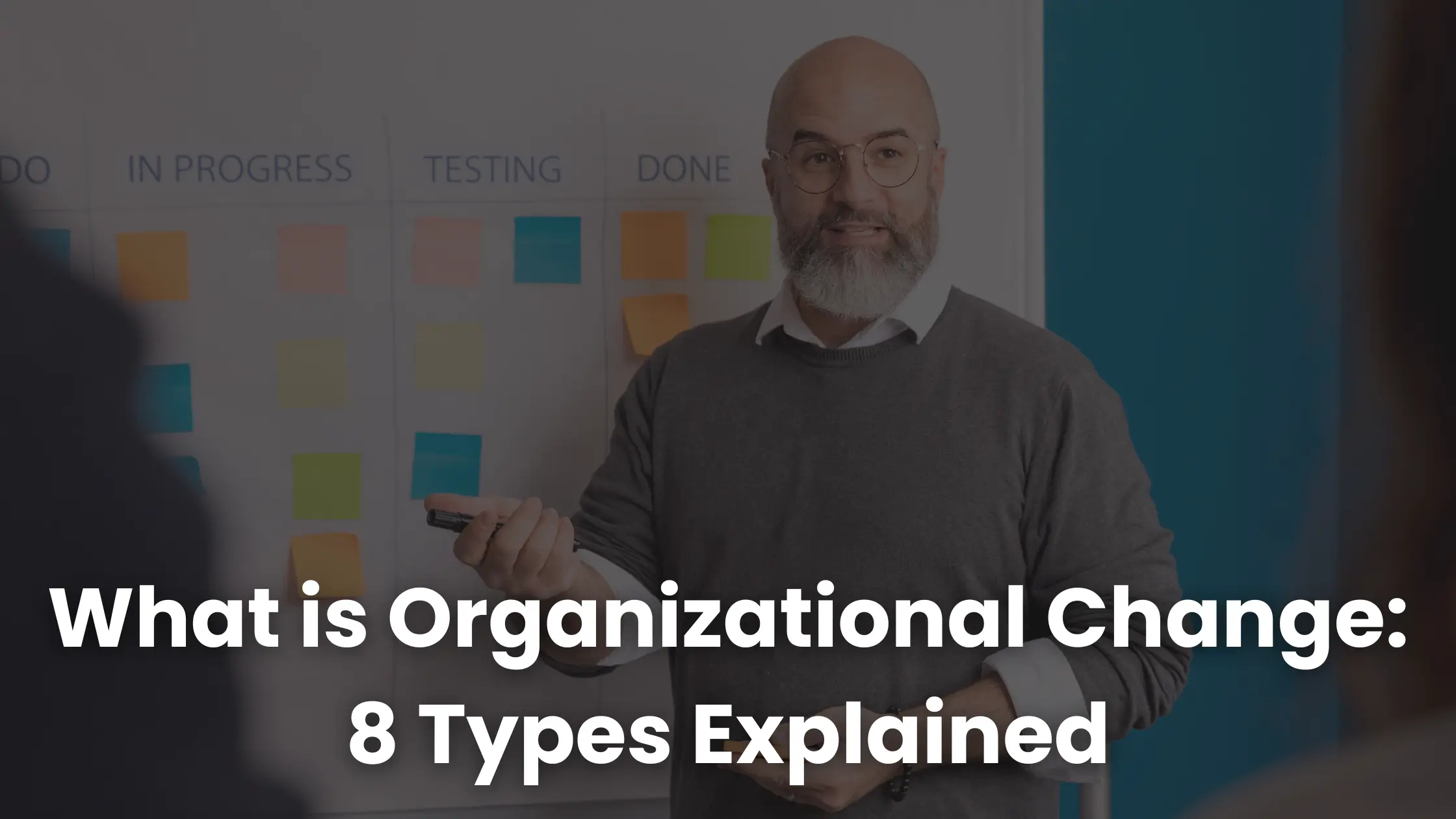
Change is the only constant in business, and it's rarely easy. According to Forbes, 70% of all organizational change initiatives fail. But despite how disruptive it may be, change is essential for the survival of any company.
Organizational change includes any adjustment in a company's structure, strategy, operations, or culture. Today, making these adjustments is no longer just about staying competitive. Globalization, remote work trends, and shifting consumer behaviors demand that your business keep changing.
In this article, we break down the eight most common types of organizational change and what they mean for your business.
Organizational change is any major shift in a company's structure, strategy, processes, people, or technology. It fundamentally alters how the company operates and adapts to internal and external pressures. This change can be planned or unplanned.
Planned change is proactive — an intentional effort to move from a current state to a desired future state. This may involve systematic strategies such as rational persuasion or shared power to engage stakeholders.
For instance, implementing a new performance management system to boost productivity is a planned change. On the other hand, unplanned change is triggered as a reaction to unexpected events, such as sudden economic downturns or crises.
Change also operates at different levels. At the individual level, it may be a change in role, upskilling, or behavior. At the team level, it can affect collaboration dynamics or leadership styles. At the organizational level, change touches every department and redefines company culture, vision, and value delivery.
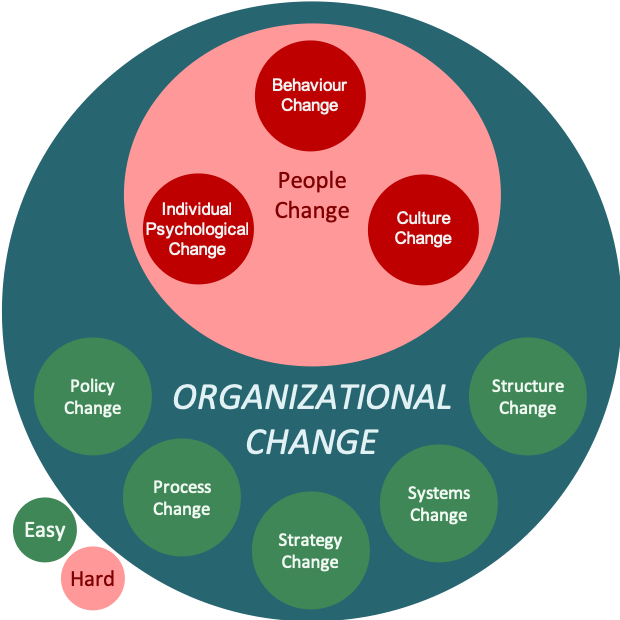
The outcomes of change fall into two broad categories: transformational and incremental. Transformational change is large-scale and radical, reshaping the core of the business. Incremental change is smaller in scope but ongoing, focused on continuous improvement and efficiency.
Despite the necessity of change, it's tricky to implement successfully. According to the CEB Corporate Leadership Council, only 34% of organizational change initiatives are successful. Meanwhile, 16% have mixed results, and 50% fail.
Successful change requires a clear vision, structured methodology, and effective communication. Organizations excelling in these areas report up to 93% achievement of their change objectives.
Here's what you need to know about the eight different types of organizational change and what they mean for your business.
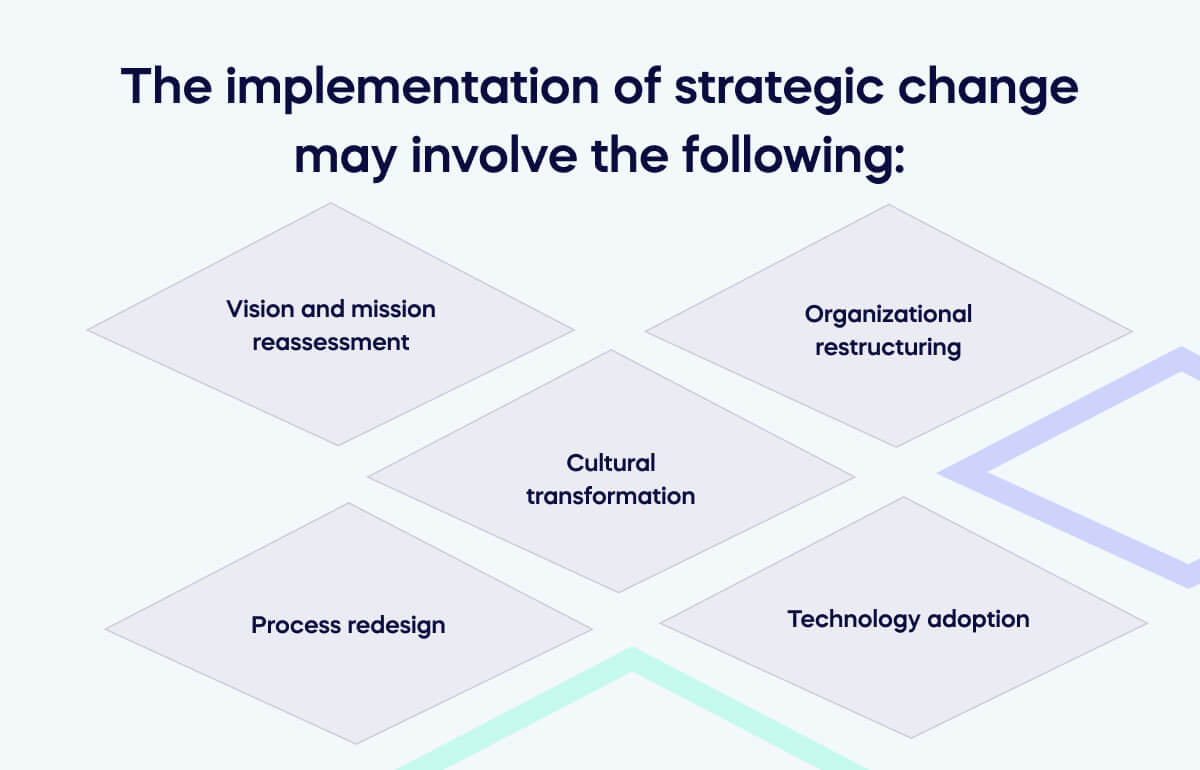
Strategic change redefines an organization's goals, vision, and mission to better align with new market conditions, competition, or innovation. The vision articulates what the company hopes to become, while the mission explains its purpose and role in society. Together, they guide the development of SMART goals.
Strategic change is often triggered by technological advances, market repositioning, or new competitive pressures. A good example is Netflix's shift from a DVD rental-by-mail service to a streaming platform. This transition disrupted the entertainment industry, making Netflix a leader in digital streaming almost instantly.
Although Netflix initially maintained its DVD business to serve niche customers, it has now fully wound down this service. Strategic changes like this help organizations stay relevant and make the most of growth opportunities in dynamic markets.
Structural change is any modification to a company's hierarchy, roles, or reporting lines. This typically happens during mergers, downsizing, or reorganizations. The goal is to improve agility, communication, and decision-making speed.
A common form of structural change is flattening the management hierarchy. By reducing layers of middle management, companies can speed up decision-making, improve communication, and empower their frontline employees. However, this can also lead to confusion if roles aren't clearly redefined or if the culture isn't ready for the shift in authority.
Structural change can be disruptive, especially if it affects job security or day-to-day workflows. In fact, 71% of employees report feeling overwhelmed by the volume of structural workplace changes. That's why it shouldn't be executed without clear communication, strong leadership, and support systems like retraining or reassignment.
Technological change means adopting new tools, systems, or platforms that alter how work is done. That includes automation, digitization, or full-scale digital transformation. According to McKinsey, 90% of organizations underwent some form of digital transformation in 2024.
One common example is migrating to cloud-based systems — 92% of leaders now report using it at some scale. While it has benefits like scalability, real-time access, and cost savings, it also disrupts established workflows and requires employee training.
Technological change can also trigger resistance, especially among employees who are unfamiliar with the new systems or fear being replaced. That's why companies must pair tech rollouts with clear communication, training programs, and ongoing support.
People-centric change is about transforming the human side of an organization. That includes its culture, leadership styles, team dynamics, and employee experience. Considering only about 23% of employees are "actively engaged" at work, people-centric change is more important than ever.
Common initiatives include diversity, equity, and inclusion (DEI) programs, leadership development, and employee engagement strategies. For example, a company might launch a company-wide DEI initiative to create a more inclusive culture and increase recognition. Frequent employee recognition boosts engagement and productivity by 40%.
People-centric change can be deeply personal and emotionally charged. It often challenges existing mindsets and requires better communication, empathy, and trust-building. Leaders play an important role since companies with strong leadership show 24% higher employee engagement.
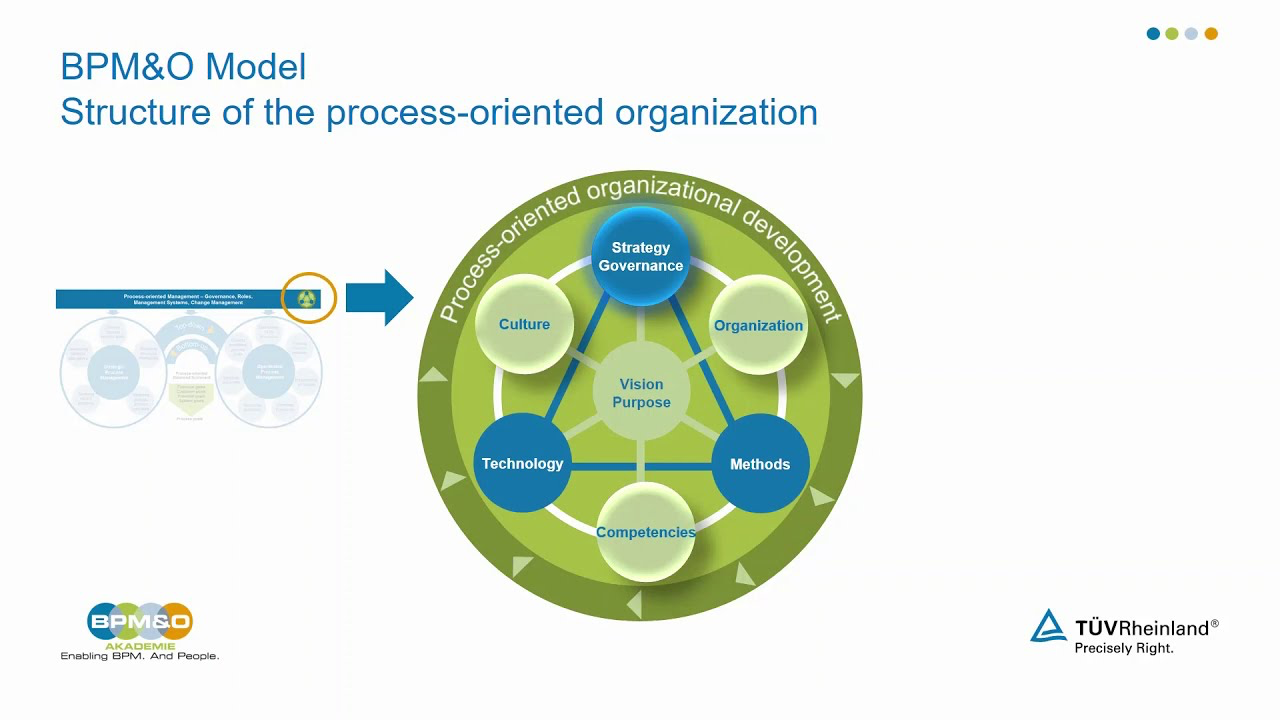
Process-oriented change improves how work gets done by streamlining operations, getting rid of inefficiencies, or introducing new workflows. This type of change targets procedures, systems, and routines to boost productivity, cut costs, or increase customer satisfaction.
Most commonly, companies use Lean, Six Sigma, and Agile to implement this type of change. For instance, a business might automate its customer onboarding process to reduce manual tasks and errors and speed up service delivery.
While these changes may seem technical, they also impact employees' day-to-day responsibilities. Without proper training and communication, even well-designed process changes can create friction or confusion. Meanwhile, organizations that clearly communicate implementation timelines report a 50% success rate in change efforts, compared to only 16% when timelines are unclear.
Remedial change is a reactive response to a problem, failure, or crisis within an organization. Unlike planned or strategic changes, remedial actions are taken under pressure, typically with tight deadlines and high stakes. The goal is to repair damage, restore stability, and prevent further issues.
Responding to a PR disaster, fixing a compliance violation, or addressing a product recall are examples of remedial change. In these cases, companies must take fast and decisive action to protect their reputation, legal standing, or customer trust.
Since remedial change is often unplanned, it can be chaotic and stressful for teams. It demands clear leadership, communication, and coordination to avoid making the situation worse.
While not ideal, remedial change can be a wake-up call. It allows teams to address deeper, long-term weaknesses once the immediate crisis is under control.
Transformational change is a deep, organization-wide shift that affects every major aspect of a business. Nearly 80% of companies undergo this type of change every 2–5 years to remain relevant. It's a high-risk, high-reward process.
A common example is switching from a traditional office-based model to a fully remote-first company. Nearly half (47%) of company leaders now allow employees to work from home full-time. This change requires rethinking everything from workflows and communication to management style and company culture.
Unlike smaller changes, transformational efforts take time, often years. It also demands strong leadership, sustained commitment, and active engagement at all levels.
When done right, transformational change can reposition an organization entirely, making it more agile, innovative, and aligned with future demands. However, without careful planning, it can cause disruption, confusion, and loss of direction.
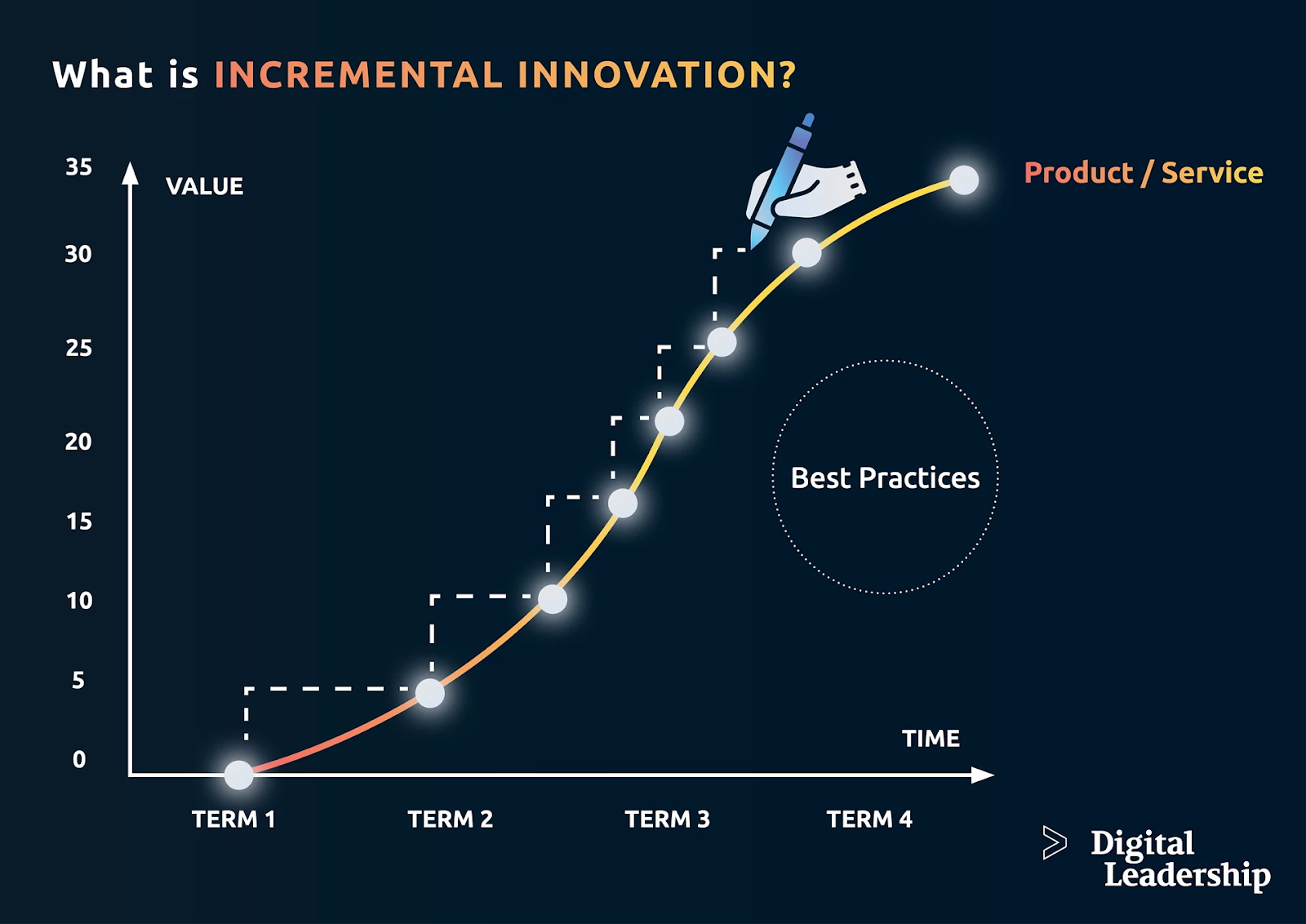
Incremental change refers to small, ongoing improvements made over time rather than a large shift in one go. It uses methodologies like Kaizen (continuous improvement) to optimize existing systems, policies, or behaviors in manageable steps.
For example, a company might introduce monthly updates to customer service protocols. Each month, the team would refine scripts, improve response times, or tweak escalation procedures.
These changes are minor in isolation, but collectively, they create massive gains in efficiency, quality, and customer satisfaction. In fact, organizations that implement structured and incremental change management see up to 58% higher success rates.
One of the key benefits of incremental change is that it's less disruptive. Employees can adapt gradually, and the risk of failure is lower since each step builds on existing processes. However, it still requires consistency, measurement, and a culture of accountability to be effective.
Organizational change can be a huge undertaking. But once you understand its various forms, you'll know when to implement the right type of change with clarity and purpose. Now that you've read our guide, you can plan organizational change more effectively, communicate better, and reduce resistance.
However, strategy is only one part of the equation — execution is everything. That's where LMS tools like Coursebox come in. It lets you quickly build and deliver custom training programs to support your change initiatives, upskill teams, and keep everyone aligned without needing a tech or L&D background.
Get started for free today.
